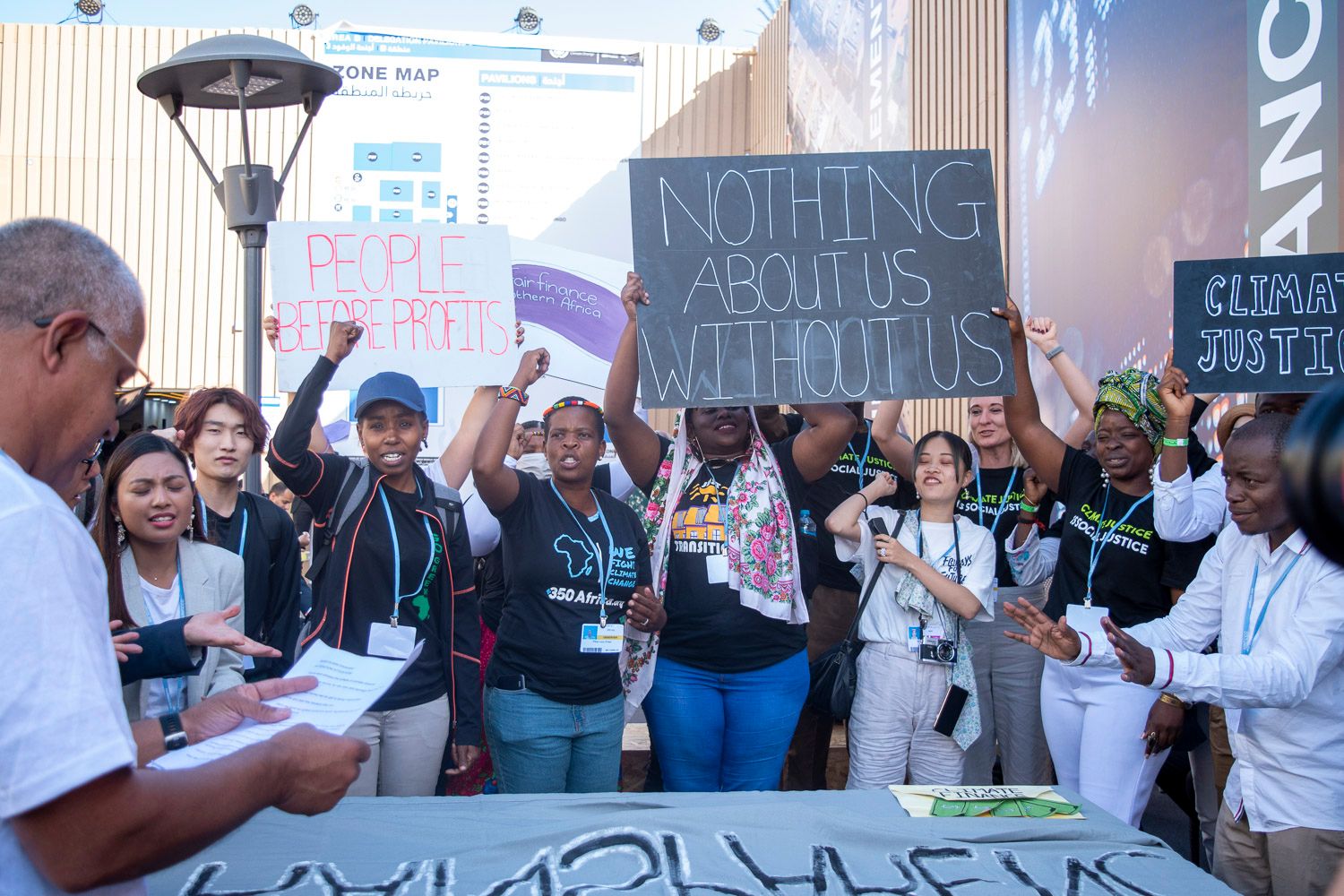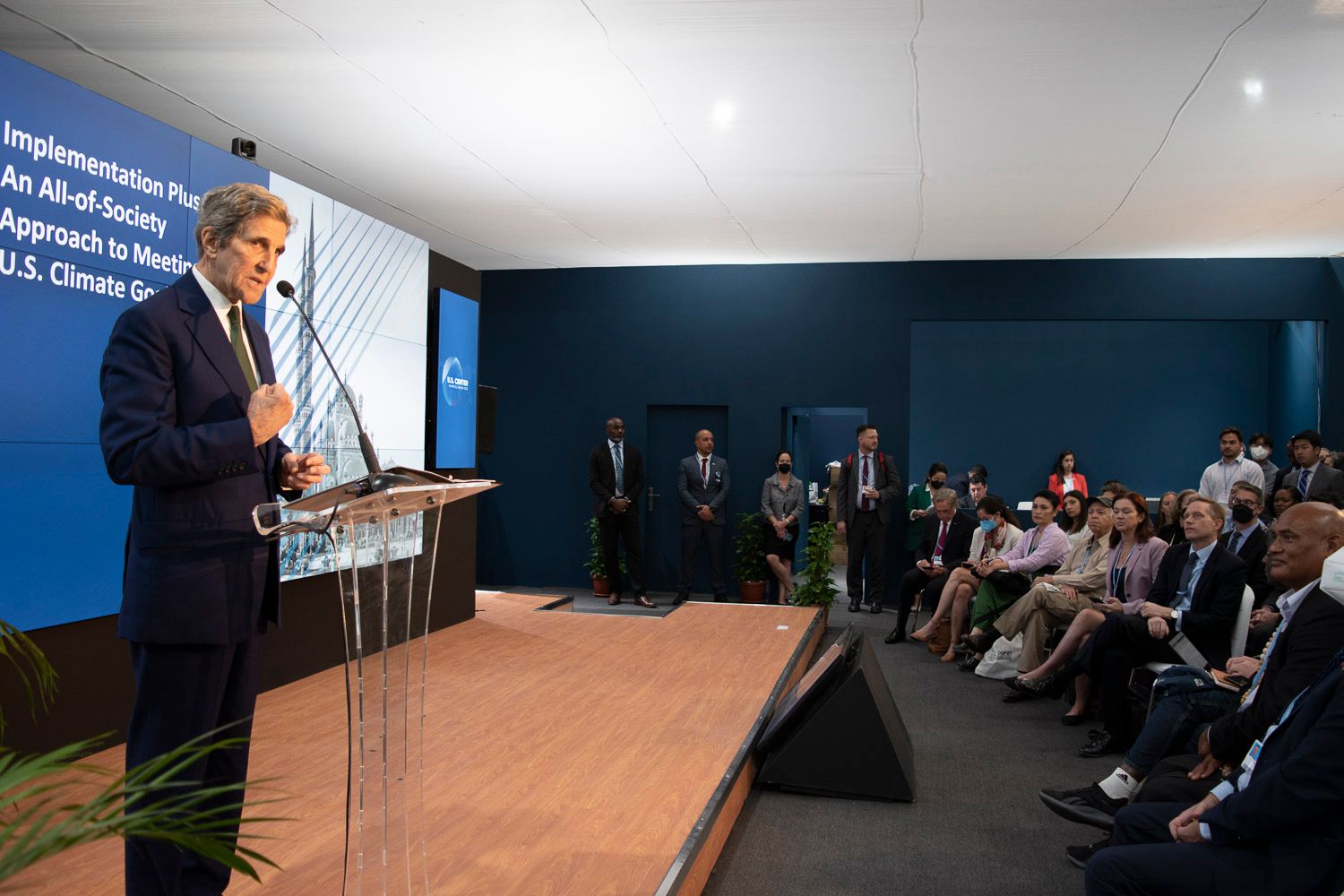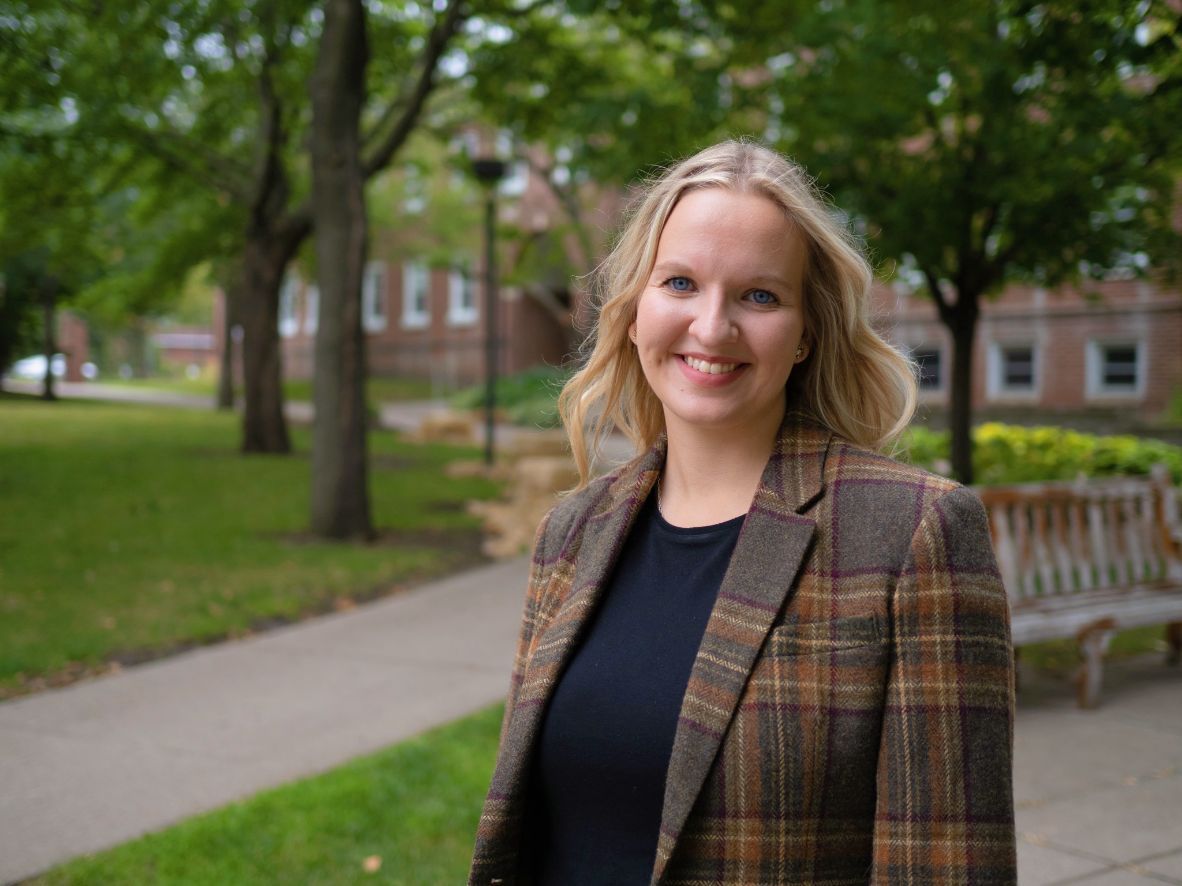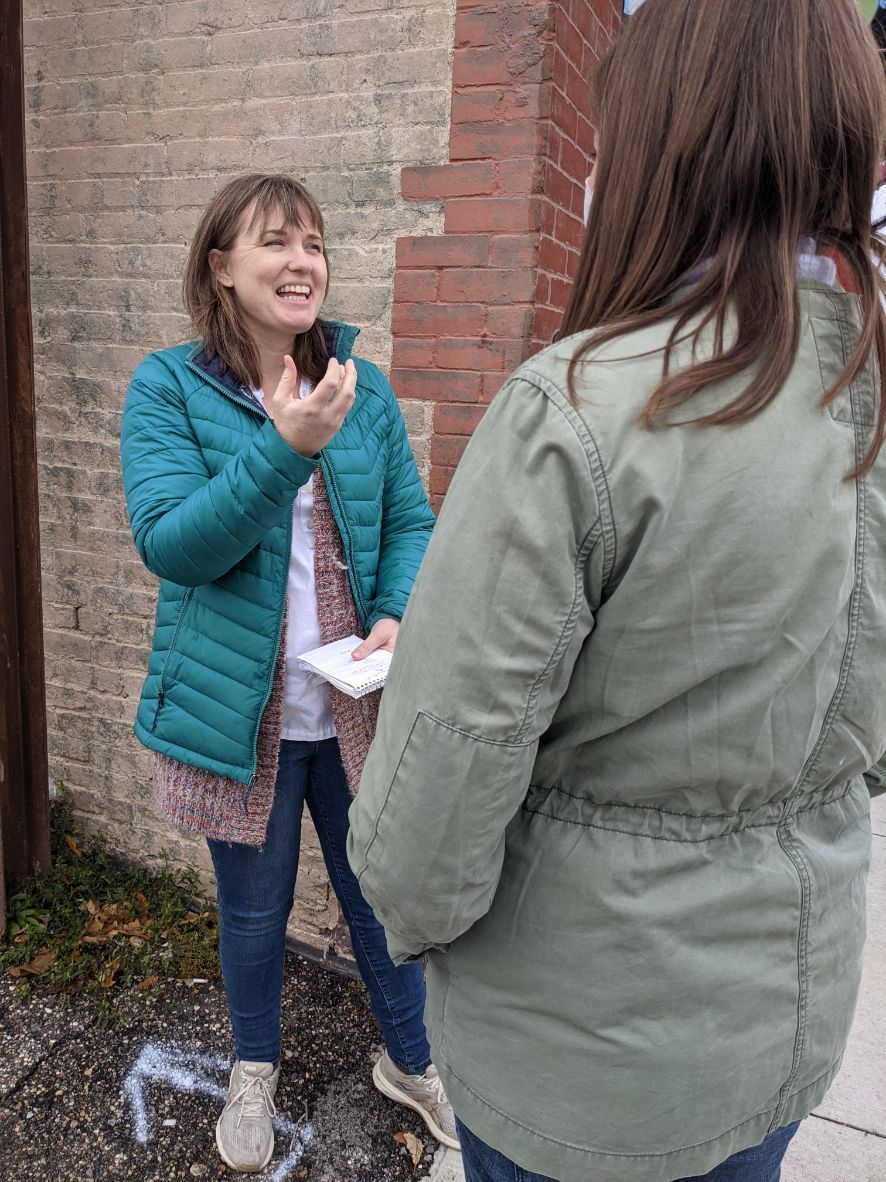An award! And we explore the nexus of public health & climate change
Public health is *finally* getting some play in global warming talks
Public health is *finally* getting some play in global warming talks

So much to share!
Happy February to old friends and new! Nora here. I'm happy to welcome an influx of new subscribers.
I want to start my message off with a celebration. Last weekend I won a first place Minnesota Newspaper Award for a large project on environmental solutions in the state!
I share the award with photographer Dave Schwarz and editor Anna Haecherl. The MIT Environmental Solutions Initiative, where I was a fellow in 2021, supported me and the project with funding and expertise.

The Minnesota Newspaper Association awarded Project Optimist founder Nora Hertel, along with photographer Dave Schwarz and editor Anna Haecherl (all former colleagues at the St. Cloud Times), with a first place award in the social issues category for a series on climate solutions. The Times also won third place in the same category. (Courtesy of the MNA Better Newspaper Contest)
Here's another thing to celebrate. I spoke on MPR's Minnesota Now show last Thursday, which directed a number of people to Project Optimist. If you missed it, you can listen here.
Here's the gist: The St. Cloud Times' newsroom has dwindled to zero. I worked there for more than four years. They didn't replace me when I resigned in 2021. Late last year, corporate leaders laid off or bought out several news staff. The remaining reporters resigned. They have open reporter positions, and I hope they fill them.
What I didn't convey in the MPR interview — and I wish I had — is how disheartening it is to see talented people leave journalism and how disheartening it is to work in an understaffed newsroom. Here are some of the stressors: unrelenting workload, low salaries, very limited raises, threat of layoffs, public distrust and frustration, online abuse.
And yet.
And yet, we need people to cover local news. And yet, journalists still want to do this work. And yet, journalism will continue to evolve.
Project Optimist is part of that evolution. We're digital-only and solutions-focused. We shine a light on environmental, business and social issues in greater Minnesota. And we're growing.
I'm hiring an event manager to take the lead on our conversation series around controversial topics. If you know someone good with logistics and interested in depolarization, send this their way.
See and share our job postings!I'm also hiring a revenue officer to help Project Optimist grow quickly and remain sustainable.
Finances are one of primary reasons traditional newsrooms are struggling. I believe the nonprofit model, with multiple revenue streams, is the future of journalism. Stable funding will also allow Project Optimist to pay journalists generously with benefits that support them as whole people.
Now for some journalism.
For the last several weeks Project Optimist has featured the work of environmental studies students. This week we have a story that brings important insights on public health and food.
I learned a lot from it. I hope you do too.

Entrance to the Green Zone at COP27. This area was the public hub for the November 2022 UN Climate Change Conference with art installations, local vendors and events in Sharm el Sheikh, Egypt. (Courtesy of Kate Fenske)
Here’s how climate change will likely impact food security and public health
By Kate Fenske for Project Optimist
This story is part of a grant-funded program at Project Optimist that involved basic journalism training for student and community reporters in central Minnesota. A group of 20 environmental studies students received the training, did field reporting at the U.N. Climate Change Conference and filed stories that highlight their research. Kate Fenske is a senior at the College of St. Benedict and St. John’s University (originally from Shoreview, Minn.) with a major in integrative science with a focus in public health and a minor in political science. She’s also managing editor at the school’s newspaper, The Record.
Public health is starting to gain traction among international stakeholders in the conversation about climate change. Agriculture, food security, disease and natural disasters all tie into health and are increasingly impacted by climate change, yet have been largely ignored until recent years.
The Amazon region of South America serves as a good case study of how public health is impacted through climate change. It illustrates how these health impacts become increasingly noticeable, and how inevitably, they become increasingly noticeable elsewhere too, including in the United States.
Already, Amazonian countries have seen shifts in vector-borne diseases such as dengue fever and malaria as temperatures rise and precipitation and humidity patterns change. These are diseases transmitted to humans through another organism – mosquitos are the most known example, but diseases like Lyme disease passed through ticks and typhus passed through fleas also fall into this category.
“When there is stagnant water and excessive floods, it causes different diseases and mosquito-led diseases like malaria and water-borne diseases to spread. These have a huge impact, but the most important aspect is that the remoteness [of some populations]. … The infrastructure needed has to modernize. And we are more and more concerned about the health and wellbeing of these families,” said Jaidev (Jai) Shroff, CEO of UPL Limited, a global biosolutions company working on the intersection of food security, public health and the environment.
While most vector-borne diseases are not spreading far enough north to reach Americans yet, countries in Central America and regions in Mexico have experienced recent increases in mosquito-borne disease. They’re spreading as mosquitos are able to survive at higher latitudes because of the newfound temperate climate conditions in different locations.
Chronic diseases such as cardiovascular disease (CVD) have also been associated with higher temperatures in many regions near the equator. This is bad news for the U.S. as climate change progresses, because CVD is already the leading cause of death here.

A group of protestors at COP27 in Sharm el Sheikh, Egypt, chanted 'nothing about us without us' in reference to BIPOC communities often being ignored by stakeholders in climate finance discussions during the conference in November 2022. (Courtesy of Kate Fenske)
What more natural disasters mean for public health
The number of billion-dollar disasters in the U.S. has been skyrocketing over the past 40 years, with 10 or more separate billion-dollar disasters every year for the past seven years. The U.S. is not alone in this statistic either – nearly every country in the world has seen an increase in natural disasters. And the public health impacts can be staggering.
In a 2005 drought in Brazil, hospitalizations rose by 54%. During the recent Hurricane Irma that hit Florida's coast, there were dozens of major infections due to contaminated water sources after public works infrastructure was knocked out. In Buffalo, New York, a recent blizzard left up to 50 inches of snow and resulted in nearly 40 deaths. The list can go on and on, both here in the U.S and globally.
Story continues after the promotion.
Promotion from Project Optimist

Check out our Year in Review
Project Optimist was busy in 2022, and we've got big plans for 2023. Check out our Year in Review and all past issues of the newsletter in our archive. Send it to your friends who need a bit of hope for the new year.
Explore our archives
Food security and nutritional health
Perhaps the largest global public health concern that could affect everyone is food insecurity. It’s defined by the United Nations Committee on World Food Security as “all people, at all times, have physical, social and economic access to sufficient, safe and nutritious food that meets their food preferences and dietary needs for an active and healthy life.”
Brazil is a top-five global producer of 34 agricultural commodities. It leads the world in soybean production, and those yields are predicted to drop 28-51% by 2040, depending on emission scenarios. Other crops such as coffee, citrus fruits, sugarcane and beans are expected to be impacted, reducing global food supply and undoubtedly increasing global food prices. This will increase the risk of food insecurity for low-income and rural populations.
“Food security [for all people] depends on the ability of farmers to keep on producing healthy, nutritious and fresh foods even during emergency conditions,” said Valaria Di Marzo, communications practice leader of the World Farmers Organization. Since agricultural yields are declining, so are incomes for agricultural and other rural workers, promoting food insecurity in the populations that, ironically, are often most directly connected to the food supply, she said.
Nutrient density in crops is yet another expected impact of climate change. Elevated carbon dioxide concentrations can decrease protein concentrations in barley, wheat, rice and potatoes by 10-15% and other minerals such as phosphorus, potassium, calcium, zinc and iron by 3-11%, depending on the crop and where it is grown.
Already, the food we eat does not go nearly as far nutritionally, and this problem is expected to only get worse. This would exacerbate the problem for the 2 billion people who are already food insecure and add more populations to that group.

United States Special Presidential Envoy for Climate John Kerry gives introductory remarks at the official opening for the U.S. pavilion at COP27 in Sharm el Sheikh, Egypt, in November 2022. (Courtesy of Kate Fenske)
Loss and damage spending for health?
COP27 was successful in setting up a climate finance fund for loss and damage. Although the specifics on how this process will work and how money will be distributed remains to be determined, public health impacts are an issue that will likely be considered as the distribution of funding for climate adaptation and mitigation allocated. It’s not clear yet whether a significant portion of the funding will go towards public health measures.
Prior to the 2022 Conference of the Parties (COP27) in Sharm El-Sheikh, Egypt, the inaugural meeting of the Alliance for Transformative Action on Climate and Health took place. At COP27, the first ever Food Systems Pavillion was established, and it was the first time “agriculture” was included as a thematic day. World Health Organization panels at the conference acknowledged how public health’s place at the proverbial climate negotiations table was young and working to be acknowledged, not nonetheless, of utmost importance.
“We have to reference our resources to respond to climate extremes, but simultaneously, we have to invest in resilience and focus on stabilizing humanitarian needs,” said Ute Klamert, deputy executive director of partnerships and advocacy at the UN World Food Programme, in support of funding public health measures.
For now countries remain largely on their own to invest in public health infrastructure and to protect their own populations from climate change.

Kate Fenske is a senior at the College of St. Benedict and St. John’s University (originally from Shoreview, Minn.) with a major in integrative science with a focus in public health and a minor in political science. (Courtesy of Kate Fenske)
Final thoughts
Thanks for reading to the end!
If you're new here, please peruse our archived newsletters. And explore the stories that have been republished to our website. You can check out a number of extremely well-researched student columns here.
I appreciate you!
♥ Nora Hertel, founder of Project Optimist

Project Optimist Founder Nora Hertel interviews a friend in downtown St. Cloud, Minn., in November 2021.
Our mailing address:
P.O. Box 298
St. Michael, Minnesota 55376
Copyright © 2023 The Optimist, All rights reserved.

